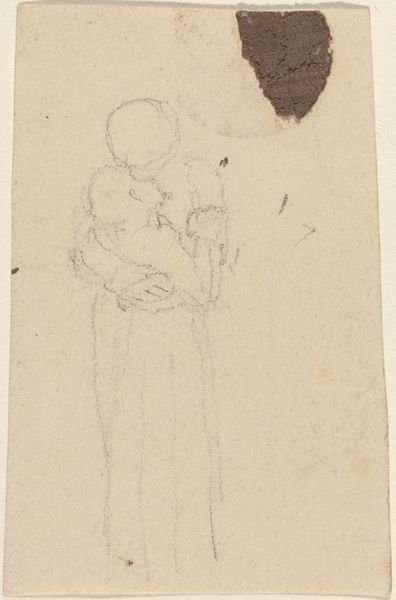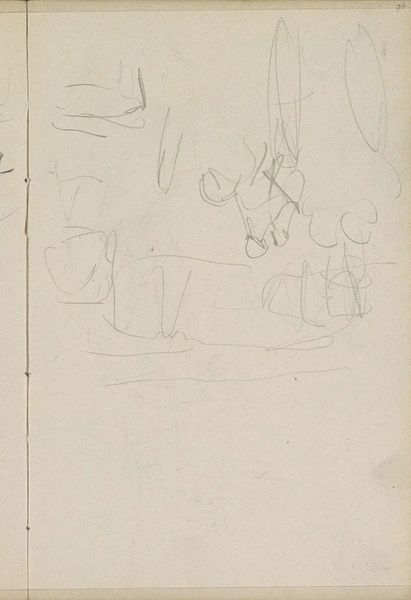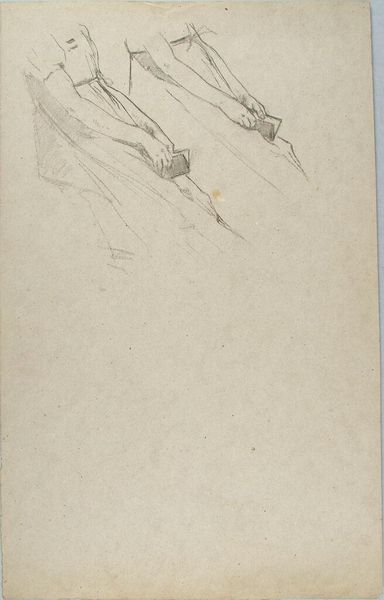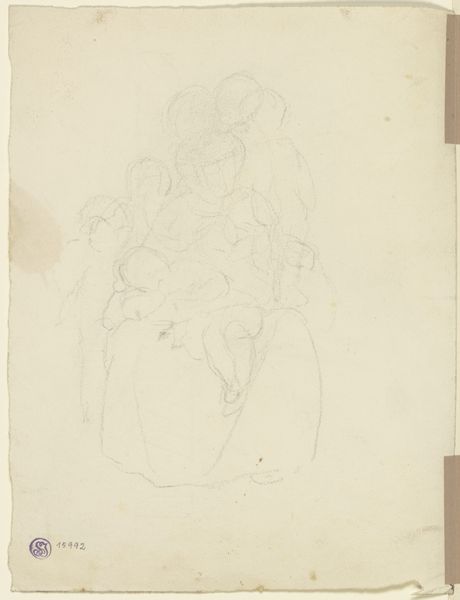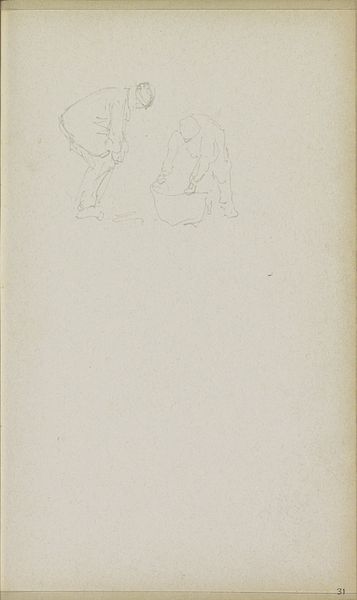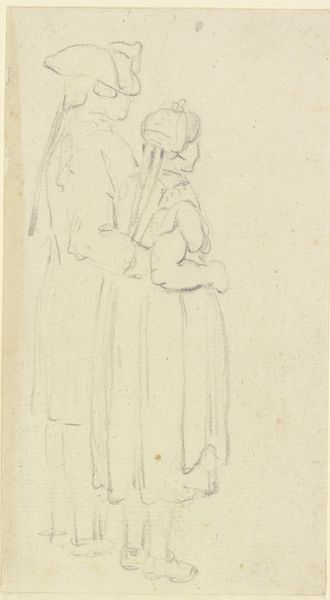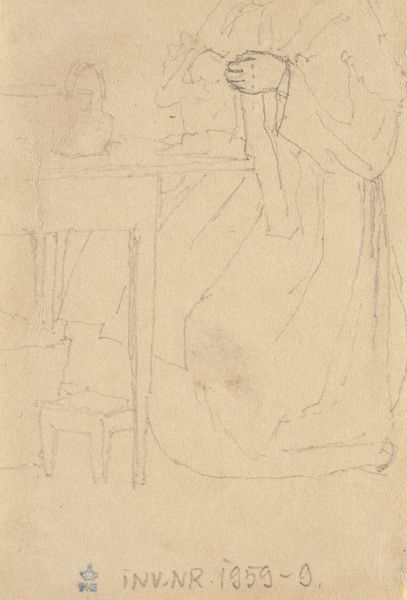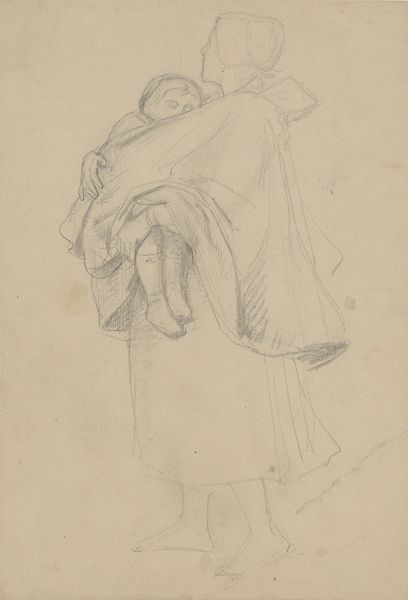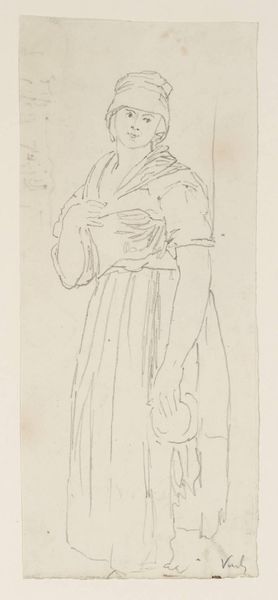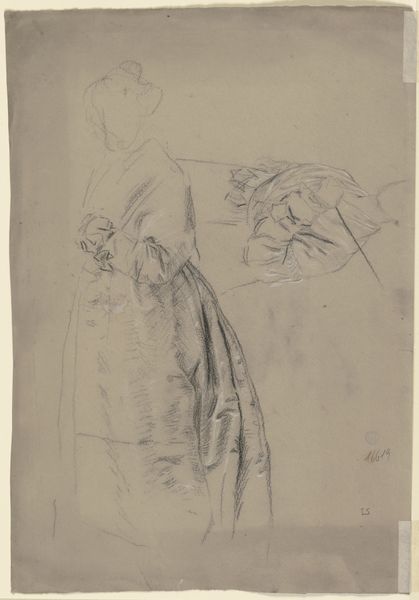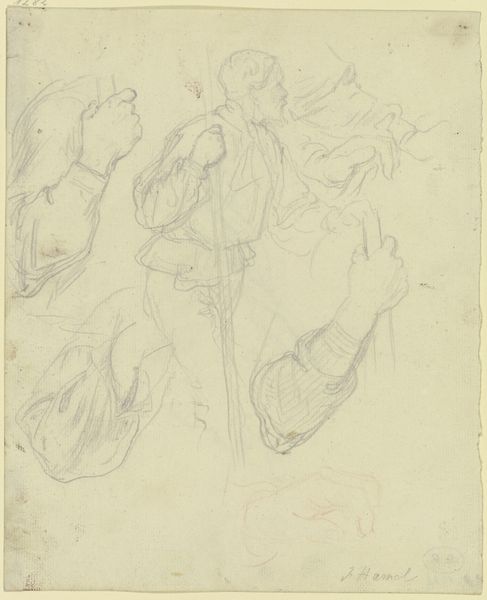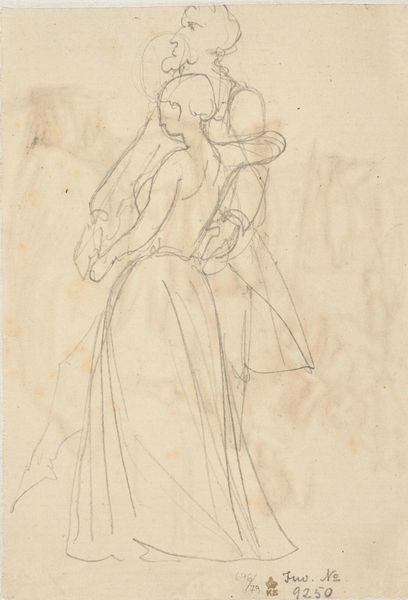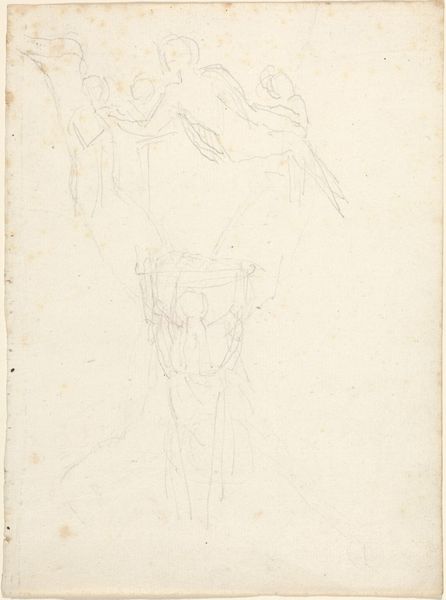
Blyantsudkast (overskåret) med del af selskabsscene 1840s
0:00
0:00
drawing, pencil
#
drawing
#
figuration
#
pencil
#
genre-painting
#
realism
Dimensions: 129 mm (height) x 160 mm (width) (bladmaal)
Curator: A somewhat ephemeral scene before us here—"Pencil Sketch (Cut Off) with Part of a Social Scene," as it's known. Made by Wilhelm Marstrand in the 1840s. Editor: My first reaction? Constraint. There’s a muted quality to the pencil work, almost as if the scene is veiled or half-remembered. The composition itself is abruptly cropped, further amplifying that feeling of being cut off. Curator: Yes, that cropped nature immediately asserts itself. The positive and negative space interplay intriguingly, given the unfinished quality. Note how the artist directs our gaze with these faint, tentative lines, a visual shorthand for form. It makes us acutely aware of the surface of the paper itself. Editor: It evokes images of propriety and repressed social exchanges, particularly amongst women. See their almost shapeless dresses and hidden faces? They're placeholders, archetypes within a restrictive societal structure of the time. Is that an almost Grecian column towards the left, and how might that signal status? Curator: Interesting that you identify it that way. The column functions, within this pictorial space, as a structuring element, establishing verticality and lending a classical counterpoint to the rather realistically depicted gathering of figures. It adds depth while also containing them within an ordered architectural construct. Editor: Perhaps it's an early visual stage for a more narrative painting where these characters and their actions become clearly readable, adhering to social norms of 19th century Denmark? The very absence of detailed faces points toward figures being more like symbols. Curator: I concede the absence of distinctive facial features supports a reading emphasizing social roles over individual personalities. But I’d push back by saying we see a different engagement in a formal perspective through this piece. The sketching is more of a pure study of line, light and form itself. Editor: Both aspects add to its meaning: figures in their moment, while lines fade and reappear suggesting change over a brief period in the subjects’ lives. Each interpretation reinforces our encounter with its meaning and feeling. Curator: Absolutely. It shows a distillation of reality to pure formal relationships and material quality, a fascinating glimpse behind the curtain of the artist’s process. Editor: Indeed, the visible struggle, in essence, opens to themes that reverberate on the mind's eye about class and cultural roles during Marstrand’s era.
Comments
No comments
Be the first to comment and join the conversation on the ultimate creative platform.
